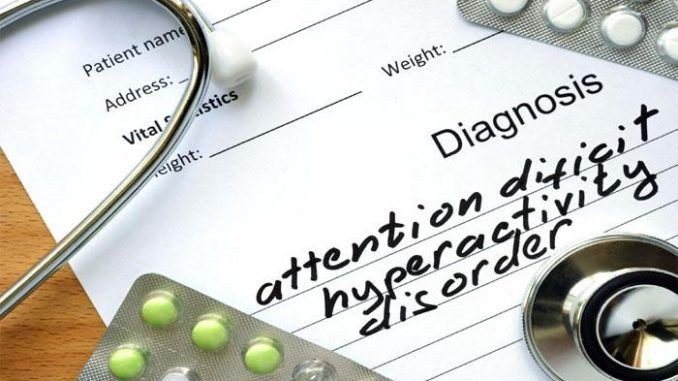
Long-term scientific studies of ADHD treatments have shown that the stimulant medication often given to patients, such as Adderall (an amphetamine) have no benefits to children, and in fact saw a deterioration in the condition after 2-years of use.
More worrying is the claim that children who use ADHD drugs long-term go on to develop bipolar, and possibly other more serious “psychotic symptoms”.
Robertwhitaker.org reports:

BYPASS THE CENSORS
Sign up to get unfiltered news delivered straight to your inbox.
You can unsubscribe any time. By subscribing you agree to our Terms of Use
At the end of six years, medication use was “associated with worse hyperactivity-impulsivity and oppositional defiant disorder symptoms,” and with greater “overall functional impairment.”
In 2003, the Medicine and Healthcare Regulatory Authority Agency (MHRA) in the United Kingdom essentially banned the use of SSRI antidepressants, except for fluoxetine, in patients under 18 years old. It did so because it found that the drugs did not offer a favorable risk-benefit profile in this age group. In this Lancet review of the available trial data, the researchers announced they supported “the conclusions reached by the MHRA.”
The Lancet editors concluded that all SSRIs, other than fluoxetine, “were both ineffective and harmful in children.”
After reviewing the outcomes literature, researchers concluded that clinical trials did not provide evidence that SSRIs, including fluoxetine, were safe and effective in children and adolescents. As such, “recommending (any antidepressant) as a treatment option, let alone as first-line treatment, would be inappropriate.”
Up until the 1990s, bipolar illness was rarely diagnosed in teenagers and virtually never in prepubertal children. But once psychiatrists began prescribing stimulants and antidepressants to children and adolescents, many began experiencing psychotic and manic reactions. These youth were then diagnosed with bipolar disorder.
Within 21 months, 9 of 98 children treated with a stimulant for ADHD developed “psychotic symptoms.” (The abstract says 6 of 98; the text itself lists 9 children who developed such symptoms.)
Two-thirds of the adolescent patients hospitalized for mania at the University of Cincinnati Medical Center had been on stimulants “prior to the onset of an affective episode.” Stimulants, the researchers concluded, may “precipitate depression and/or mania in children who would not have otherwise developed bipolar disorder.”
Eleven percent of children diagnosed with ADHD and treated with stimulants developed bipolar symptoms within four years.
Twenty-five percent of children and adolescents diagnosed with depression and treated with antidepressants convert to bipolar illness within four years. “Antidepressant treatment may well induce switching into mania, rapid cycling or affective instability in the young, as it almost certainly does in adults.”
Nearly half of prepubertal children treated for depression converted to bipolar within 10 years.
In a study of 79 juvenile bipolar patients, 62% had been treated with a stimulant or an antidepressant prior to becoming manic.
Eighty-four percent of the children treated for bipolar illness at a mood disorders clinic in New York City between 1998 and 2000 had been exposed to psychiatric drugs prior to their being diagnosed as bipolar. “Strikingly, in fewer than 10% (of the cases) was diagnosis of bipolar disorder considered initially.”
In adults diagnosed with bipolar illness, the worst outcomes are seen in those with “mixed state” and “rapid cycling symptoms.” Those symptoms were virtually never seen in adults prior to the psychopharmacology era, but rather are associated with exposure to antidepressants. These are the very symptoms that afflict the overwhelming majority of juvenile bipolar patients, which suggests that they will have very poor long-term outcomes.
Two-thirds of the juvenile bipolar patients treated at a mood disorders clinic in New York City were “ultra, ultra rapid-cyclers,” and another 19% suffred from rapid cycling only a little bit less extreme. “In contrast to a biphasic, episodic and relatively slow cycling course in some adults with bipolar disorder, pediatric forms usually involve mixed mood states and a sub-chronic, unstable, and unremitting course.”
In the NIMH’s STEP-BD study, researchers conclude that pre-adult onset (of bipolar illness) is “associated with greater rates of comorbid anxiety disorders and substance abuse, more recurrences, shorter periods of euthymia, and greater likelihood of suicide attempts and violence.”
Early onset bipolar patients are symptomatic about 60% of the time and shift polarity–from depression to mania or vice versa–an astonishing 16 times a year. The prepubertal patients were “two times less likely that those with postpubertal onset bipolar to recover,” and will likely be “poor responders to treatment when they become adults.”
Only 41% of adolescents hospitalized for a first bipolar episode functionally recovered within one year.
In juvenile bipolar patients, functional impairment worsens after the first year (with continued drug treatment.)
Lithium, antidepressants and mood stabilizers all failed to help bipolar youth fare better at the end of two years. Juvenile bipolar patients treated with an antipsychotic medication, which is a standard treatment, “were significantly less likely to recover than those who did not receive a neuroleptic.”


Be the first to comment